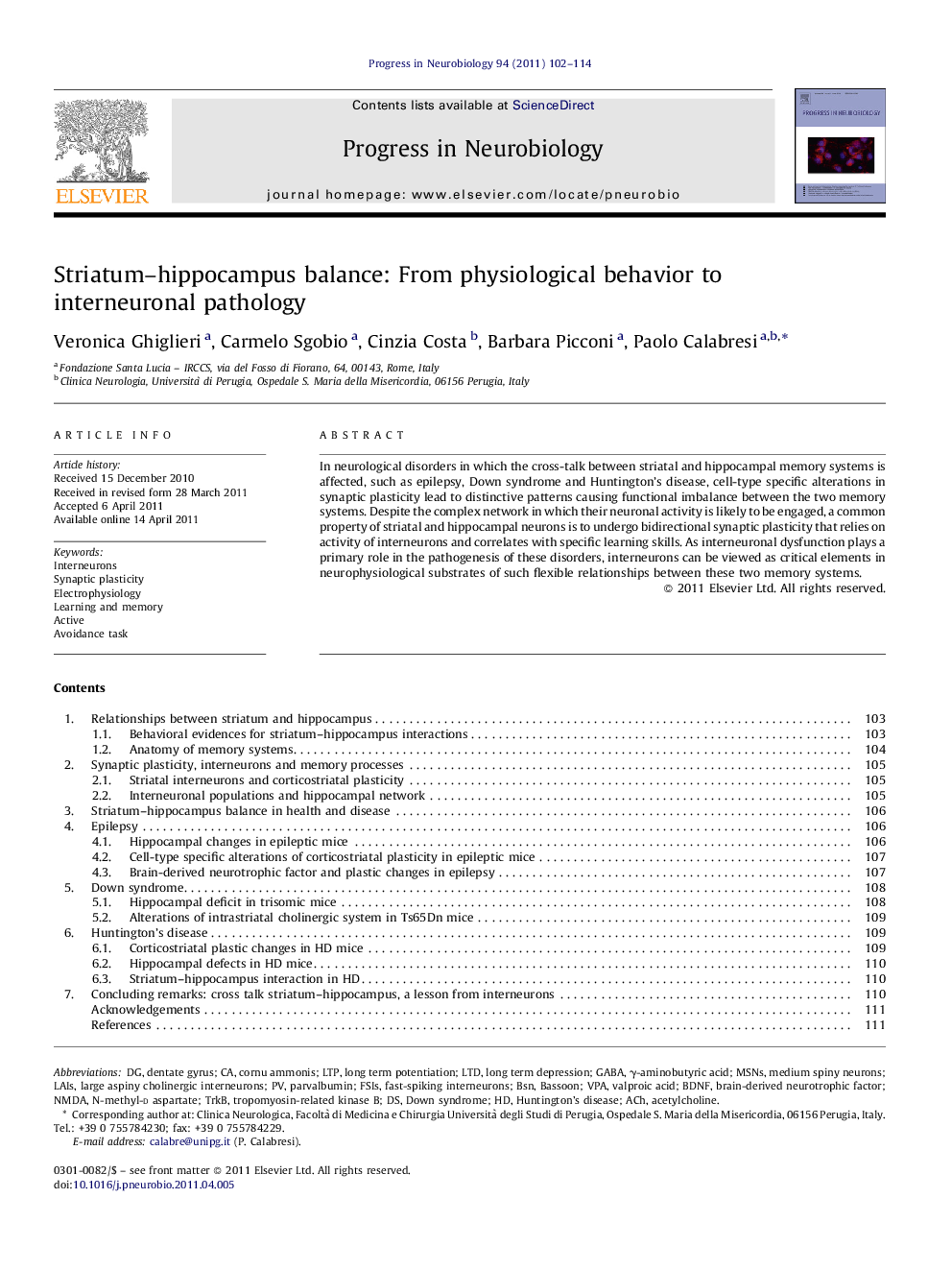| Article ID | Journal | Published Year | Pages | File Type |
|---|---|---|---|---|
| 4353599 | Progress in Neurobiology | 2011 | 13 Pages |
In neurological disorders in which the cross-talk between striatal and hippocampal memory systems is affected, such as epilepsy, Down syndrome and Huntington's disease, cell-type specific alterations in synaptic plasticity lead to distinctive patterns causing functional imbalance between the two memory systems. Despite the complex network in which their neuronal activity is likely to be engaged, a common property of striatal and hippocampal neurons is to undergo bidirectional synaptic plasticity that relies on activity of interneurons and correlates with specific learning skills. As interneuronal dysfunction plays a primary role in the pathogenesis of these disorders, interneurons can be viewed as critical elements in neurophysiological substrates of such flexible relationships between these two memory systems.
► Functional and anatomical relationships between striatum and hippocampus. ► Importance of interneurons in synaptic plasticity processes. ► Changes in striatum–hippocampus balance in health and disease. ► Hippocampal and striatal changes in epilepsy. ► Procedural and spatial learning in experimental Down syndrome. ► Striatal and hippocampal interactions in Huntington's disease.
